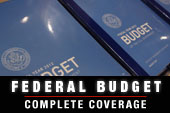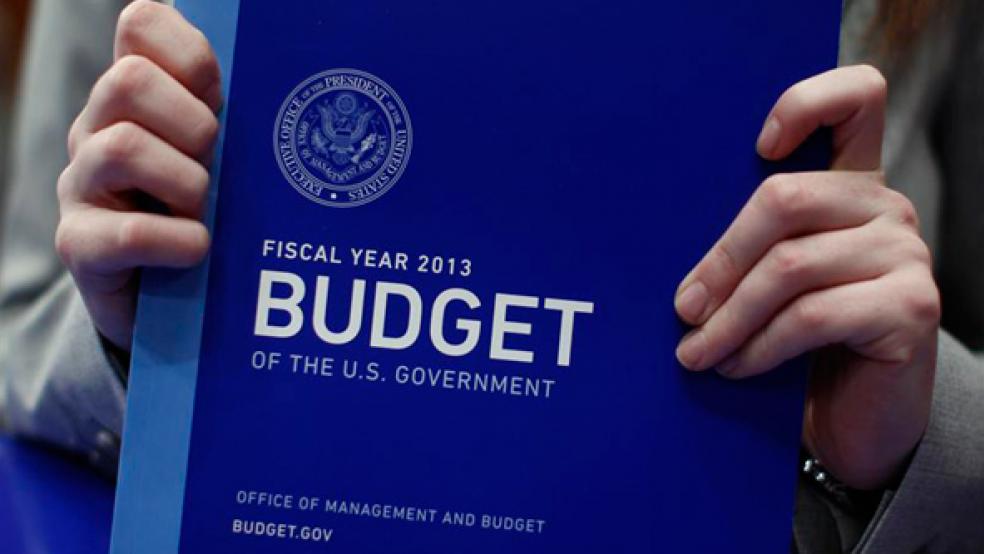In late April 2010, then-Senate Budget Chairman Kent Conrad, D-N.D., boasted that the upper chamber would quickly take up his committee’s new budget blueprint that would take a big chunk out of the deficit. “This budget is fiscally responsible and provides a solid framework for accelerating our nation’s economic recovery and restoring our fiscal strength,” Conrad declared.

That was the last thing anybody ever heard about it.
Senate Majority Leader Harry Reid, eying a tough reelection campaign for himself in Nevada and a handful of other Democrats, blocked Conrad from bringing the budget to the Senate floor for a vote. Republicans were poised to offer scores of amendments to force Democrats into making unpopular votes that could be used against them in 30-second attack ads, and Reid wasn’t about to give them an opening.
“The budget process – like much else in the Senate – had spiraled out of control and was nothing more than a day’s worth of voting on highly politically charged amendments,” recalled Jim Manley, Reid’s chief spokesman at the time. “Reid decided he’d try to protect his members from taking some of those tough votes.”
And that was only the prelude.
Two years later, the Senate still had not passed a budget, as Reid played a game of political rope-a-dope, absorbing sharp criticism from angry Republicans and deficit-minded Democrats like Conrad.
Sen. Jeff Sessions of Alabama, the ranking Republican on the Budget Committee, railed at Reid for his “unconscionable stance that no budget – even his chairman’s – should receive consideration on the Senate floor. House Majority Whip Kevin McCarthy, R-Calif., just last week noted, “The last time [the Senate] passed a budget, the iPad hadn’t even been introduced.”
Reid abruptly abandoned his obstructionist tactics last week after House Republicans pledged to suspend the national debt ceiling for four months – and the threat of a default on the U.S. debt --if the Senate finally passed a budget and engage in serious negotiations over spending and entitlement and tax reform. The Senate is expected to approve the House-passed offer on Wednesday and send it to President Obama for his signature.
HOW REID PLAYED THE GAME
To an average American, it’s baffling that the Senate would go more than three years without putting a budget proposal to a vote. But some budget and policy experts say that Reid’s strategy was remarkably shrewd. It enabled him to protect his Senate colleagues from pointless but potentially dangerous votes on a raft of budget and tangential issues, while at the same time establishing a beachhead to defend President Obama’s programs and policies from a Republican assault in the House.
As Reid and other Democrats were facing sharp challenges from Tea Party conservatives in 2010, Reid attempted to inoculate his majority from divisive votes on budget amendments that ranged from deficit reduction and Medicare cuts to immigration, abortion and a raft of other social issues.
Republicans wrested control of the House from the Democrats that year on a wave of conservative activism, but Senate Democrats lost only four seats and held on to a 55-seat majority, including two independents.
The Senate became Obama’s legislative refuge on Capitol Hill and a major roadblock to House Republican efforts to push through Wisconsin Congressman Paul Ryan’s budget plans in 2011 and 2012 for overhauling Medicare and Medicaid and repealing the president’s health care reform law—moves that Democrats claimed would shred the social safety net.
“I can’t quibble with Reid’s strategy,” Norman Ornstein, a congressional scholar with the conservative American Enterprise Institute, said yesterday. “The only point of him doing a budget resolution was to avoid criticism … that the Senate can’t even do a budget resolution. . . So as long as you could tolerate that, it was not worth it to do a resolution.”
Senate Democrats understood that there was no way they could reach agreement with the House on a long-term spending plan, so why bother? “The House budget was not a budget designed to bring about a budget resolution, it was a budget designed to put out a political marker – to see how we can balance the budget without taxes and in fact with more tax cuts,” Ornstein added. “So substantively there was no reason for the Senate to do anything unless it wanted to lay out its own marker – but it wasn’t going anywhere.”
The 1974 Congressional Budget Act requires the two chambers each year to adopt a budget plan for the coming five years and then for its leaders to sit down and hammer out a compromise that would serve as the congressional uber plan for spending and taxes in the coming fiscal year. But the final joint budget resolution isn’t subject to the president’s signature, meaning it lacks the force of law. And while budget resolutions can be passed by a simple majority in the House and Senate, a second parliamentary step in the Senate requires a 60-vote super majority to approve. That makes it virtually impossible to pass out a budget in the Senate in the face of the deep divide between the two parties.
Congress has failed to jointly agree on a budget only about a half dozen times in the past 38 years, according to the Congressional Research Service. Without a budget, lawmakers and the president can still muddle through by approving a series of appropriations or a continuing resolution to keep the government afloat.
“The budget resolution process works well when there is a real chance of the House and Senate reaching agreement on an overall budget plan ,” said James Horney, a veteran Washington budget expert. “While one can argue that it might have been good from a public relations standpoint for Senate Democrats to bring up a budget resolution, it would not have moved the budget forward in any [meaningful] way.”
CONRAD GETS ACED OUT
Conrad, a former North Dakota tax commissioner, spent much of the past quarter century in the Senate calling for balanced budgets and decrying deficits. As the Senate Budget Committee chairman, he tirelessly worked behind the scenes to try to negotiate “Grand Bargains,” such as the deficit reduction recommendations of the Simpson-Bowles presidential fiscal commission.
But Conrad’s efforts were frequently thwarted by sharp divisions within his own party as well as opposition from Republicans. In 2010, he boasted that his fiscal 2011 budget plan was tougher on the deficit than President Obama’s approach – much to the dismay of liberals in his party. And the next year, he proposed a fiscal 2012 budget that many Democrats condemned as moving too far to the right.
“One of the big reasons that Conrad had trouble getting a bill even out of committee was that nobody wanted to vote on a deficit that was $1.4 trillion or $1.2 trillion for fear that it would be mischaracterized,” said Stan Collender, a Washington consultant and long-time expert on the federal budget . “So the lesser of two political evils was to vote for nothing, because the average person doesn’t know what the budget resolution is and doesn’t know that we don’t have it.”
Last fall, an increasingly frustrated Conrad worked with other Democratic and Republican senators to craft a modified version of the Bowles-Simpson plan for spending cuts, entitlement reform and tax increases, as the November election was fast approaching.
But after Obama beat Republican Mitt Romney and the Senate Democrats increased their majority slightly, his efforts were brushed aside in the rush to negotiate a deal to avoid a year-end fiscal cliff.
Conrad retired at the end of the year, and his successor, Sen. Patty Murray, a liberal Democrat from Washington, told her colleagues last Thursday that her first budget would call for additional revenue from tax breaks for upper-income households.
Murray’s approach, needless to say, will be very different from a new budget crafted by House Budget Committee Chairman Paul Ryan, R-Wis., who has vowed to reach a surplus in ten years by slashing spending but without increasing tax revenues further. The two chambers appear on another collision course.





